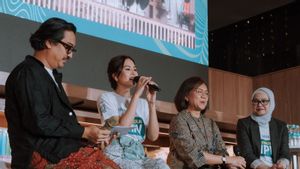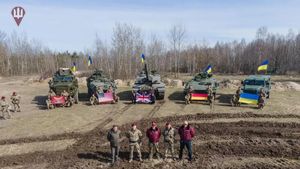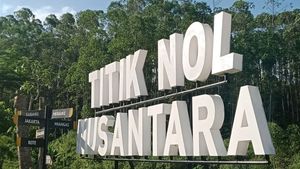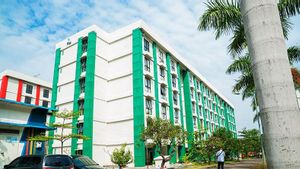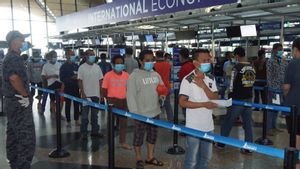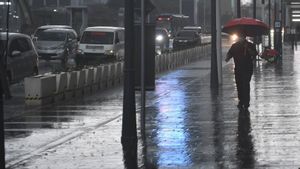
JAKARTA - On November 12, 1991, a peaceful demonstration on the way to the Santa Cruz cemetery in Dili, East Timor, was marked by bloody events. More than 271 East Timorese were shot dead by Indonesian troops. This incident triggered a more massive pro-independence movement in East Timor.
Prior to the events at the Santa Cruz Cemetery, the political atmosphere in Dili escalated or to be precise ahead of the scheduled visit of the Portuguese parliamentary delegation on November 4, 1991. In an interview Publico on October 22 1991, the well-known Bishop of Dili, Carlos Ximenes Belo, said the Indonesian authorities commemorate the people of East Timor. They were advised not to take part in demonstrations or not to say anything to members of the delegation about independence.
If they did, they would be killed after the delegates left. Belo called on international powers to monitor the situation after the delegates left.
However, the delegation's visit was "suspended" by the Portuguese government on 26 October 1991. This was because the Indonesians objected to an Australian journalist, Jill Jolliffe, from taking part in the Portuguese press contingent. Jill Jolliffe is considered to have supported the resistance in East Timor, Fretilin.
Citing the Asia Watch report, many sources said the decision to cancel the visit of the Portuguese delegation to East Timor frustrated many young activists in Dili. They decided to use the visit of Pieter Kooijmans, the UN Special Rapporteur on Torture who plans to visit East Timor on November 10-12 as the focal point of the demonstration. If the resistance cannot use Portuguese MPs and accompanying journalists to get their message across, it will focus on other international figures.
On 27 October 1991, when it was announced that the visit of the Portuguese delegation was cancelled, the Moteal Church of Dili, a church used as a sanctuary by some activists, held mass as usual on Sunday. However, around midnight, according to the Asia Watch report, the sound of motorbikes was heard and on October 28, 1991 at 1 am, a group of Timorese on motorbikes threw stones at the church and shouted insults.

Some of the youths who lived near the church then fought back. Fighting broke out and shortly after the soldiers and police arrived, they opened fire and stormed the church. One of the activists, Sebastiao Gomez, was shot dead outside the church.
One of the men on the other hand, His name was Afonso Henrique, was stabbed to death. At least two other people in the clashes were seriously injured when the military opened fire.
November 12th shootingTwo weeks later, mass for Sebastiao Gomez was held at Dilli's Moteal Church. The Mass was attended by thousands of Catholics, starting at 6am and ending at 7am. After the mass, people left the church carrying banners of the leader of the pro-independence movement Xanana Gusmano. They continued to shout independence calls and walked towards the Santa Cruz Cemetery, where Sebastiao Gomez is buried.
The journey to Santa Cruz remained orderly, but the Indonesian military saw it as a pro-independence demonstration and thus, a demonstration against Indonesia. During the procession to the Santa Cruz cemetery, hundreds of Indonesian soldiers opened fire on peaceful protesters.
According to a report by the organization Democracy Speaks, three international journalists witnessed and recorded the massacre. The journalists included two Americans, Amy Goodman and Allan Nairn, both of whom were severely beaten by the Indonesian military during the clashes. The trio managed to smuggle the footage overseas and share the footage with the international community, which sparked international condemnation of Indonesia.
The UN Secretary General at the time, Javier Perez de Cuellar stated that he regretted the incident that claimed so many victims and requested a report from Pieter Kooijmans, the Special Rapporteur appointed by the UN Commission on Human Rights who was in Dili at the time of the killings. Canadian Foreign Minister Barbara McDougall, announced that Canada's $52 million aid program to Indonesia would be reviewed. The United States (US) Congress cut the budget for the IMET training program for the Indonesian military, although arms sales to ABRI continued.
Quoting Tirto, the Indonesian government responded to international criticism by changing the military leadership structure in East Timor. In 1992, the Army Headquarters through the Military Honor Council (DKM) dismissed the Regional Military Commander (Pangdam) IX Udayana, Major General Sintong Panjaitan, Pangkalakops Timor along with all Assistant Pangkolakops, Danrem 164/Wira Dharma, Dandim 1827/Dili were removed from their positions. However, military operations in East Timor are still being carried out.
On 30 August 1999, East Timor held a ballot or referendum. The referendum has the final decision to completely separate from the Unitary State of the Republic of Indonesia. As many as 78.5 percent of the people of East Timor voted for independence from Indonesia. The referendum was also called for ending the conflict in East Timor.
*Read other information about TODAY's HISTORY or read other interesting articles from Putri Ainur Islam.
TODAY'S HISTORY MoreThe English, Chinese, Japanese, Arabic, and French versions are automatically generated by the AI. So there may still be inaccuracies in translating, please always see Indonesian as our main language. (system supported by DigitalSiber.id)


